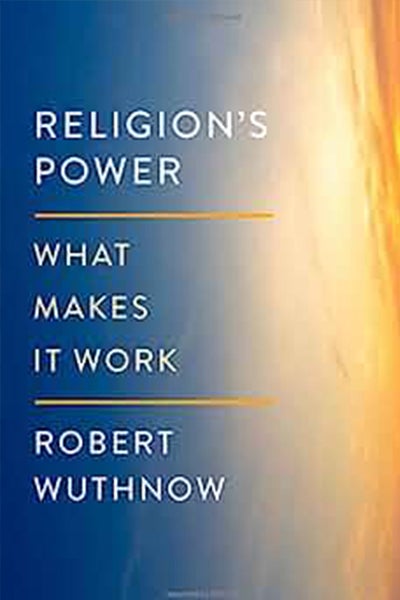Reviewed by Moses Biney, Department of Sociology
Religion’s Power: What Makes It Work by Robert Wuthnow provides an addition to the theory of practice focusing on how power manifests in the practices of religious people and institutions. According to Wuthnow, “Religion’s power is expressed in what people do and say”(7).
In an interview for the Boniuk Institute, Wuthnow mentioned that a major motivation for the book was his work showing how practice theory pertains to religion. Wuthnow said that in writing on practice theory in religion, he realized that power was a big part of practice theory. This was why he decided to write a book on power as it pertains to practice theory and religion. The author hopes that after reading the book, people will think about power in different ways.
According to Wuthnow, Power is the ability to control scarce resources that are unequally distributed in order to fulfill a desired end. In religious practice, Power is a group, population, or institution's ability to leverage their religious beliefs to get or accomplish what they want. In this sense, Wuthnow states that religious power can be exploitative and can be used for evil purposes.
The author mentions that power in religious practice manifests in rituals, narratives, institutional resources, identity, and politics. Religious power manifests in how rituals are performed and how the person performing the ritual relates to the object of worship and in what they do to express commonality with those they are assembled with. The manner and emotions with which religious narratives are presented also contribute to the manifestation of its power.
In addition, the author states that religious power reinforces unequal distribution of opportunity based on gender, sexual orientation, race and nationality. This, the author mentions is shown through exclusion of certain persons from leadership positions in religious organizations because of their race, gender, nationality and sexual orientation.
Wuthnow states that religion’s power is seen in the political sphere through the increasing level of involvement of religious institutions and groups in the political system. Religious institutions enjoy exemption from taxes and exemption from many of reporting requirements and regulations that govern businesses. As a result, religious institutions and groups are able to lobby for policies and influence the political system in their favor.
In concluding the book, the author mentions that “religious practices are mostly simple to perform, requiring relatively easy gestures such as standing, bowing, and kneeling. The meanings of these gestures are constructed by the situations in which they occur” (220). Overall, the book was written for undergraduate, and graduate students, and academics in general. It is useful as a material in addition to a textbook on religion.
Wuthnow, Robert. Religion's Power: What Makes it Work, Oxford, United Kingdom: Oxford University Press, 2022.

